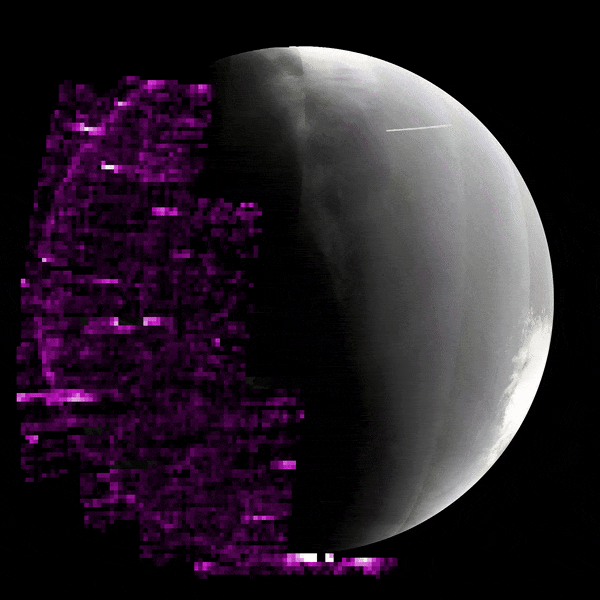Mars Was Hit With a Solar Storm Days After Earth's Aurora Light Show, NASA Says
Studying this event could hold lessons for scientists about how to protect astronauts from radiation on future trips to the Red Planet
Christian Thorsberg
Daily Correspondent
June 17, 2024 11:31 a.m.

Mars appears as a gray planet with purple light flashing across its entire left half
Purple squares illustrate auroras on Mars, as detected by NASA’s MAVEN orbiter between May 14 and May 20. The brighter the purple, the more auroras present. NASA / University of Colorado / LASP
Days after solar storms spurred widespread sightings of auroras across Earth in early May, a new bout of eruptions on the sun brought glowing skies to another planet: Mars.
From pole to pole, Mars was hit by a barrage of gamma rays and X-rays, followed by charged particles from a coronal mass ejection. These led to auroras that would have appeared, if any viewers were on its surface, as a deep green color, reports the New York Times’ Robin George Andrews.
But while humans were able to watch the Earthen spectacle safely—our planet’s magnetic field and atmosphere shielded us from the solar radiation and sent the charged particles toward the poles—such events would be more dangerous on the Red Planet, which lost its magnetic field long ago and has a much thinner atmosphere.
The storm hit Mars on May 20, offering researchers an opportunity to consider how solar radiation would impact potential future astronauts there.
More:
https://www.smithsonianmag.com/smart-news/mars-was-hit-with-a-solar-storm-days-after-earths-aurora-light-show-nasa-says-180984548/
